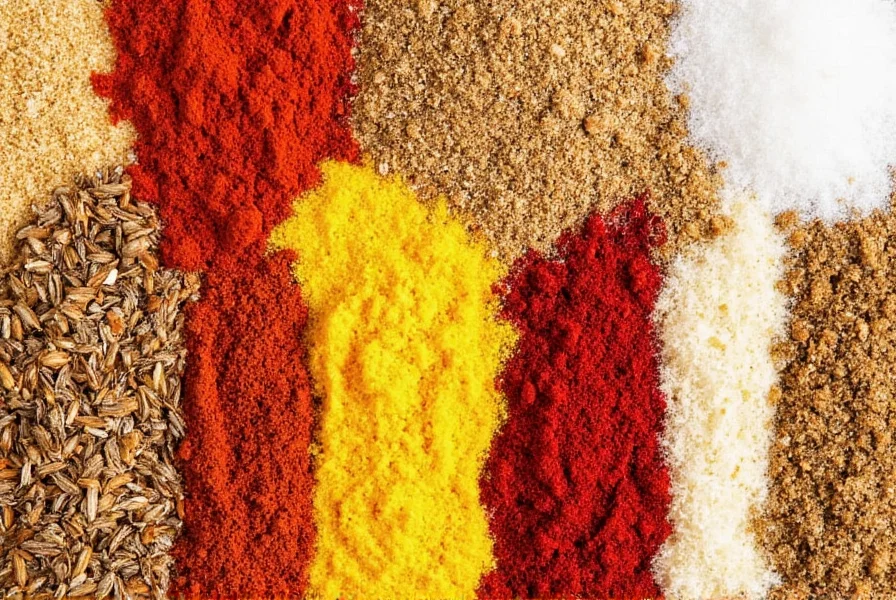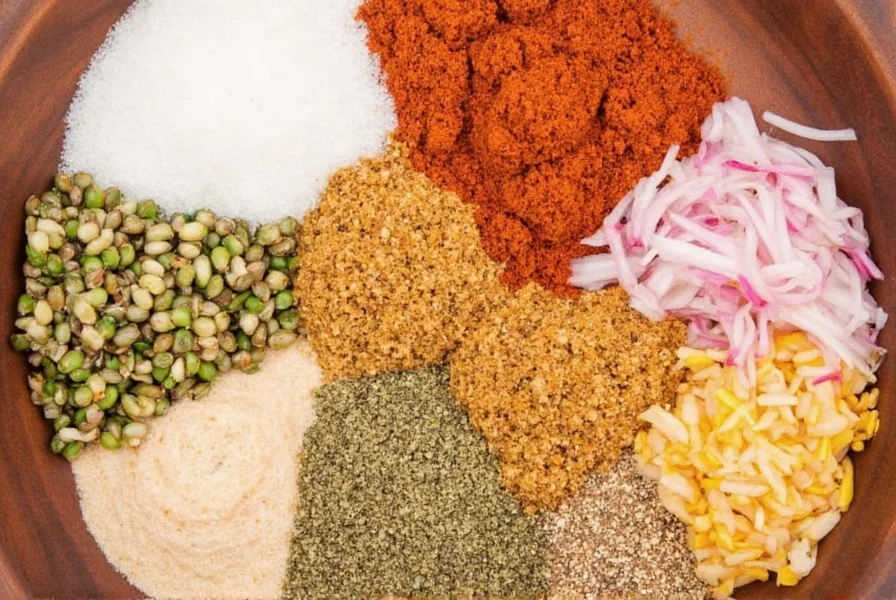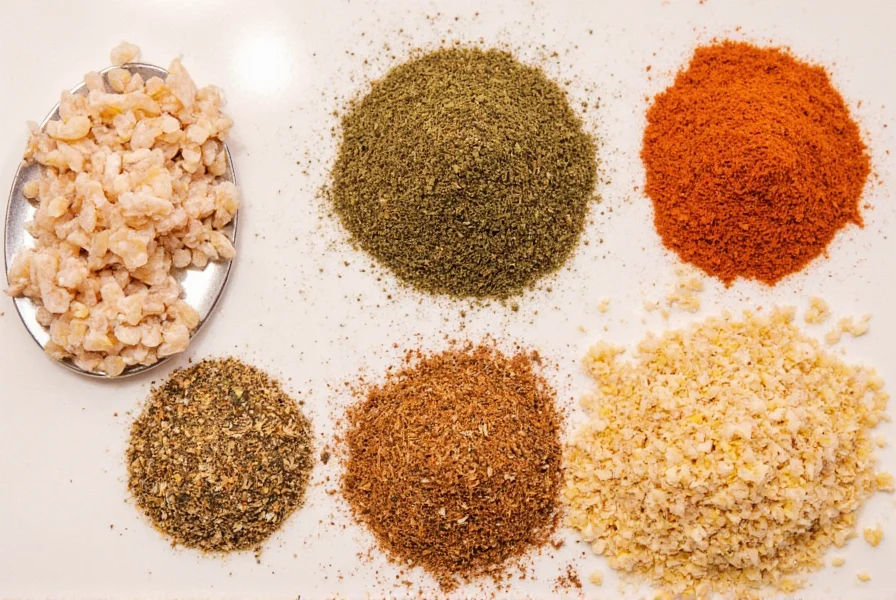5 Secret Thai Seasoning Hacks That Will Transform Your Kitchen Forever!
If you’ve ever tasted authentic Thai food and wondered how it manages to balance sweet, sour, salty, spicy, and umami so perfectly — you're not alone. The secret lies in the spices and seasonings used throughout Thailand’s rich culinary traditions. In this article, we’ll dive deep into the world of Thai seasoning, uncover its core ingredients, flavor profiles, and most importantly, give you five game-changing hacks that will elevate your home cooking to a whole new level.
Table of Contents
- What is Thai Seasoning?
- Key Ingredients in Thai Seasoning
- The Five Game-Changing Thai Seasoning Hacks
- How to Use Thai Seasoning Effectively
- Buying Guide for Thai Seasoning Products
- Conclusion
What is Thai Seasoning?
When someone mentions "Thai seasoning," they might be referring to either a commercial spice mix or the traditional combination of herbs and condiments used in Thai cooking. Unlike American-style seasonings that often focus on one dominant flavor, Thai seasoning is all about balance — both in taste and texture.
While store-bought Thai seasoning blends are convenient, real Thai cuisine uses fresh ingredients like lemongrass, galangal (Thai ginger), kaffir lime leaves, chilies, fish sauce, and shrimp paste. These ingredients combine to create a complex flavor profile that defines dishes like Pad Thai, Tom Kha Gai, and Green Curry.
Key Ingredients in Thai Seasoning
Here’s a breakdown of the essential components that make up classic Thai seasoning:
| Ingredient | Flavor Profile | Common Uses |
|---|---|---|
| Lemongrass | Citrusy, herbal | Curries, soups, marinades |
| Galangal | Spicy, pine-like, earthy | Soups, curries, stir-fries |
| Kaffir Lime Leaves | Aromatic, citrusy | Curries, soups, steamed dishes |
| Fish Sauce | Salty, umami | Dipping sauces, marinades, stir-fries |
| Shrimp Paste | Pungent, savory | Curry pastes, dipping sauces |
| Bird's Eye Chili | Very hot, fruity | Curries, stir-fries, salads |
The Five Game-Changing Thai Seasoning Hacks
Ready to turn your kitchen into a mini Bangkok street stall? Here are five simple yet powerful Thai seasoning hacks you can use right away:
Hack #1: Toast It First
Toasted Thai seasoning brings out deeper, nuttier flavors. Especially when using dry spice mixes or curry powders, a quick toast in a dry pan before adding to your dish can unlock a whole new layer of complexity.

Hack #2: Layer It Slowly
Don’t just dump all your seasoning at once! Add it in layers as you cook. Start with aromatics (like garlic or shallots), then introduce your Thai seasoning base (curry paste or herbs), followed by proteins and vegetables. This allows each ingredient to absorb the flavors more deeply.
Hack #3: Balance Is Everything
Thai seasoning shines when all five tastes — sweet, salty, sour, spicy, and umami — are present. For example, if you’re making a pad thai, don’t forget the tamarind paste (sour), palm sugar (sweet), fish sauce (salty), chili flakes (spicy), and bean sprouts/tofu (umami).
Hack #4: Make Your Own Curry Paste
Commercial curry pastes are great, but nothing beats homemade. Try blending fresh galangal, lemongrass, bird’s eye chilies, kaffir lime zest, garlic, and shrimp paste in a food processor. Store it in an airtight jar in the fridge for up to two weeks.
Hack #5: Finish With Fresh Herbs
Add chopped cilantro, Thai basil, or mint at the end of cooking for a burst of freshness. These herbs contrast beautifully with the richness of Thai seasonings and elevate the overall experience.
How to Use Thai Seasoning Effectively
Using Thai seasoning effectively isn’t just about throwing spices into a pot. Here are some practical tips to get the most out of your Thai seasoning experience:
- Use fresh herbs when possible: Dried alternatives can work, but nothing beats the aroma of fresh lemongrass or kaffir lime leaves.
- Balance flavors with acid: A splash of lime juice or tamarind paste can instantly brighten up a heavy dish.
- Control the heat: Adjust the number of chilies based on your audience. Seedless chilies = less heat.
- Build from the base: Start with curry paste or aromatics, then add liquids, protein, and veggies in sequence.
- Let it rest: Some Thai dishes, especially curries, develop better flavor after sitting for a few hours or overnight.
Buying Guide for Thai Seasoning Products
Whether you're a beginner or a seasoned pro, having the right Thai seasoning products in your pantry makes a world of difference. Here’s a handy guide to help you choose wisely:
| Product | Features | Advantages | Best For | Occasion |
|---|---|---|---|---|
| Maesri Red Curry Paste | Authentic Thai brand, gluten-free | Mild to medium heat, balanced flavor | Beginners and everyday cooks | Quick dinners and weeknight meals |
| Krua Thai Green Curry Paste | Strong chili presence, bold aroma | Ideal for coconut milk-based curries | Experienced cooks who enjoy heat | Weekend cooking and dinner parties |
| Golden Mountain Fish Sauce | Clean, salty, mild aroma | Perfect substitute for soy sauce | Vegetarians and flavor lovers | Stir-fries and dipping sauces |
| Taste of Thai Lemongrass Paste | Convenient tube packaging, easy to store | Consistent flavor, no chopping required | Busy professionals and meal prep fans | Quick soup bases and marinades |
| Thai Kitchen Shrimp Paste | Intense, fermented flavor | Adds depth to curry pastes and dips | Advanced home cooks and chefs | Specialty dishes and homemade pastes |

Conclusion
Thai seasoning isn't just about heat — it's about harmony. From fragrant lemongrass to punchy fish sauce, every element plays a role in creating a symphony of flavor. Whether you're experimenting with homemade pastes or reaching for your favorite store-bought blend, these five Thai seasoning hacks will ensure your dishes sing with authenticity and flair.

So next time you reach for that bottle of fish sauce or scoop of curry paste, remember: Thai seasoning is your passport to a world of bold flavors and culinary adventures. And now, thanks to these tips, you’re fully equipped to bring the essence of Thailand into your own kitchen.











 浙公网安备
33010002000092号
浙公网安备
33010002000092号 浙B2-20120091-4
浙B2-20120091-4